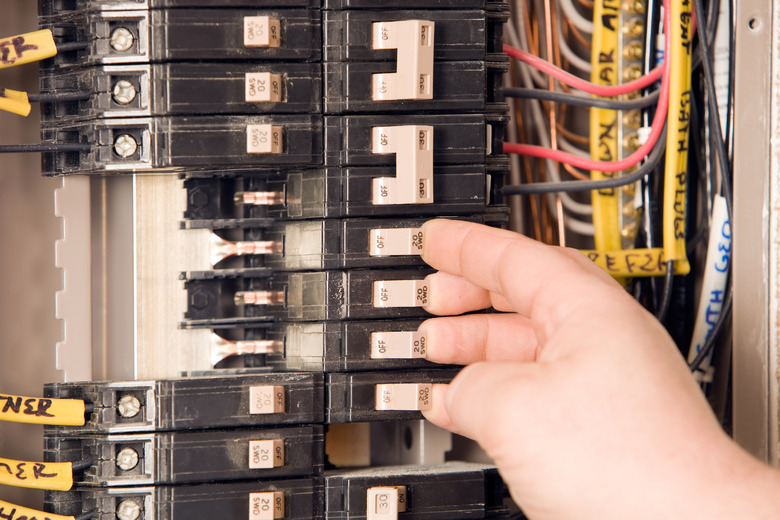What Are The Causes Of Arcing In An Electrical Panel?
Electrical arcing, sometimes called an arc flash, occurs when electricity flows or discharges along an unintended path and jumps to a nearby grounded object. Arc faults, caused by low, erratic electrical flows, commonly occur due to frayed or exposed wires and can occur anywhere in your home, including the electrical panel. The resulting electricity flash measures 35,000 degrees Fahrenheit and can cause an electrical fire, so understanding the issue is important to keeping your home safe.
Tip
Electrical arcing often happens when the electrical panel is overloaded or faulty. Some conditions in the electrical panel, such as exposed wiring, can contribute to electrical arcing.
Electrical Overload in the Panel
Arcing in an electrical panel occurs when circuits that make up the panel become overloaded. Overheating can occur where a circuit breaker connects to an electrical panel bus. It can damage the bus as well as the connection, making equipment unreliable and prone to failure.
Damaged circuit breakers may not perform properly when excessive currents occur. Instead of tripping when excessive or dangerous current occurs, damaged circuits may continue to let electricity flow, leading to overheating and possible arcing.
Contributing Electrical Panel Conditions
Conditions in or around an electrical panel can contribute to possible arcing as well as to the arcing's severity, should it occur. Electrical panel wiring should never be exposed outside the box. Combustible materials, including gasoline, paint thinner, and similar liquids, should be kept away from the vicinity of the electricity panel.
Overfusing, or using too many fuses inside an electrical box, can cause too much electricity to flow through the circuitry, leading to overheating and arcing. Fuses that blow or circuit breakers that trip frequently can indicate a possible arcing hazard. Other indicators of potential arcing include burn marks or a burning smell near the panel, as well as buzzing or cracking sounds.
Faulty Electrical Panels
Electrical panels made by at least two manufacturers have, in field tests, been shown to harbor faulty construction that can lead to arcing and possible electrical fires. Zinsco electrical panels may have faulty circuit breaker connections that may cause the units to blow out panel side casings in explosions or let electricity flow even when in the off position. Federal Pacific Stab-Lok Electrical Panels also have a high incidence of faulty circuit breakers that may fail to trip when needed.
Such failures are considered latent hazards, as they don't directly cause arcing but contribute to it. Most faulty panels were manufactured in the 1970s or earlier. If you have a faulty electrical panel, have it replaced by a licensed electrician, who can ensure everything is working properly.
Preventing Electrical Arcing
Beginning in 2002, the National Electrical Code required that all new construction include arc fault circuit interrupters on branch circuits inside electrical panels. AFCIs look like normal circuit breakers and fit into electrical panels in the same manner, but they are able to detect dangerous electrical currents that may produce arcs. They are similar to ground fault circuit interrupters (GFCI), which are outlets with circuit breakers that protect people from electrical shocks in rooms such as bathrooms and kitchens. If your home doesn't have AFCIs, consider having them installed by a licensed electrician.
